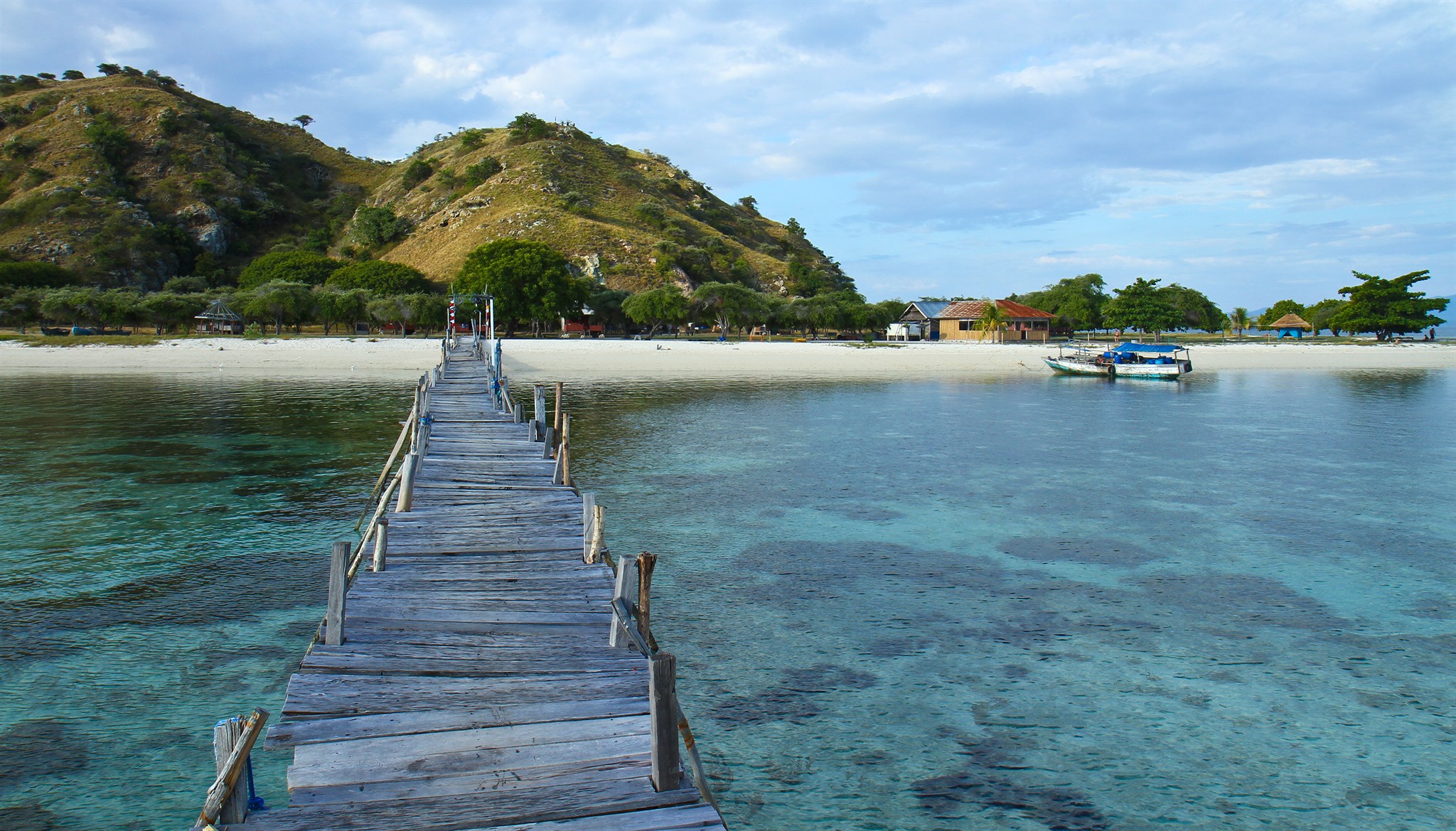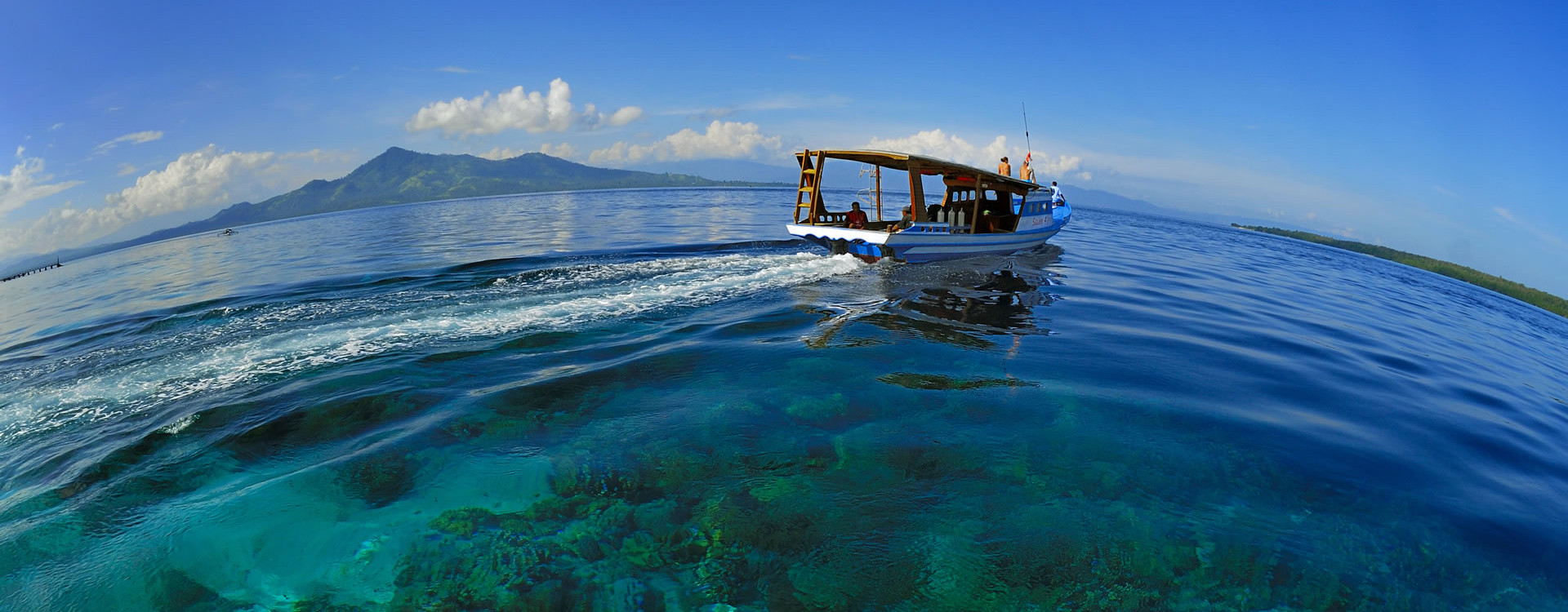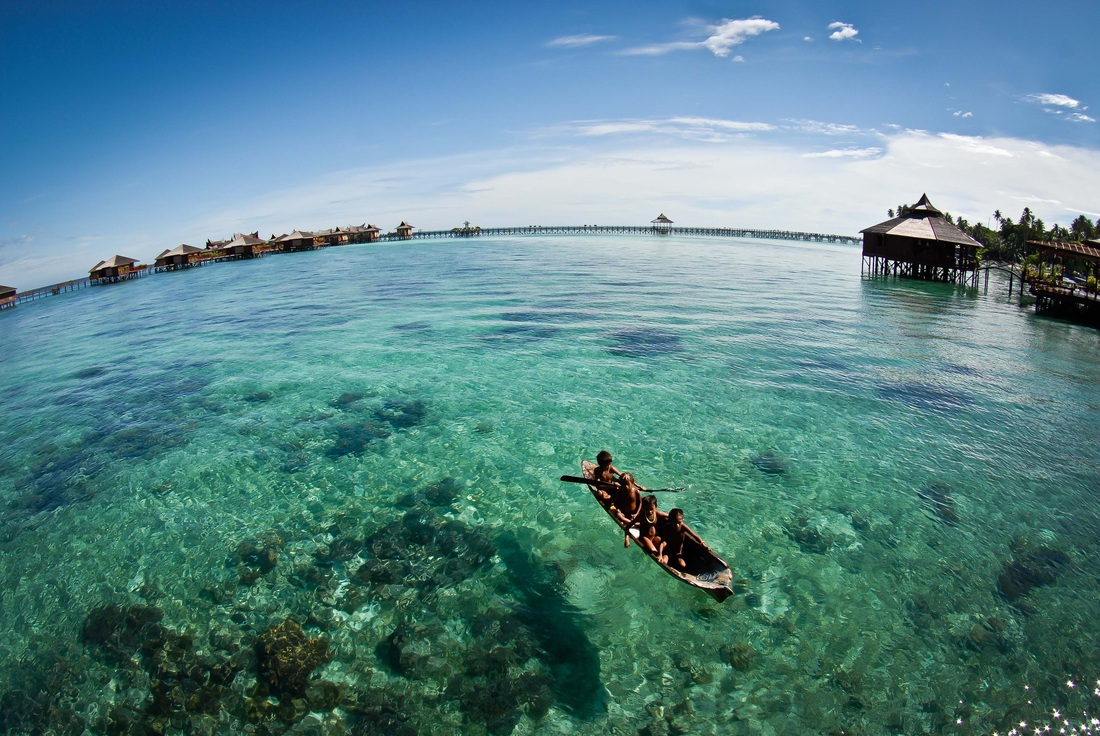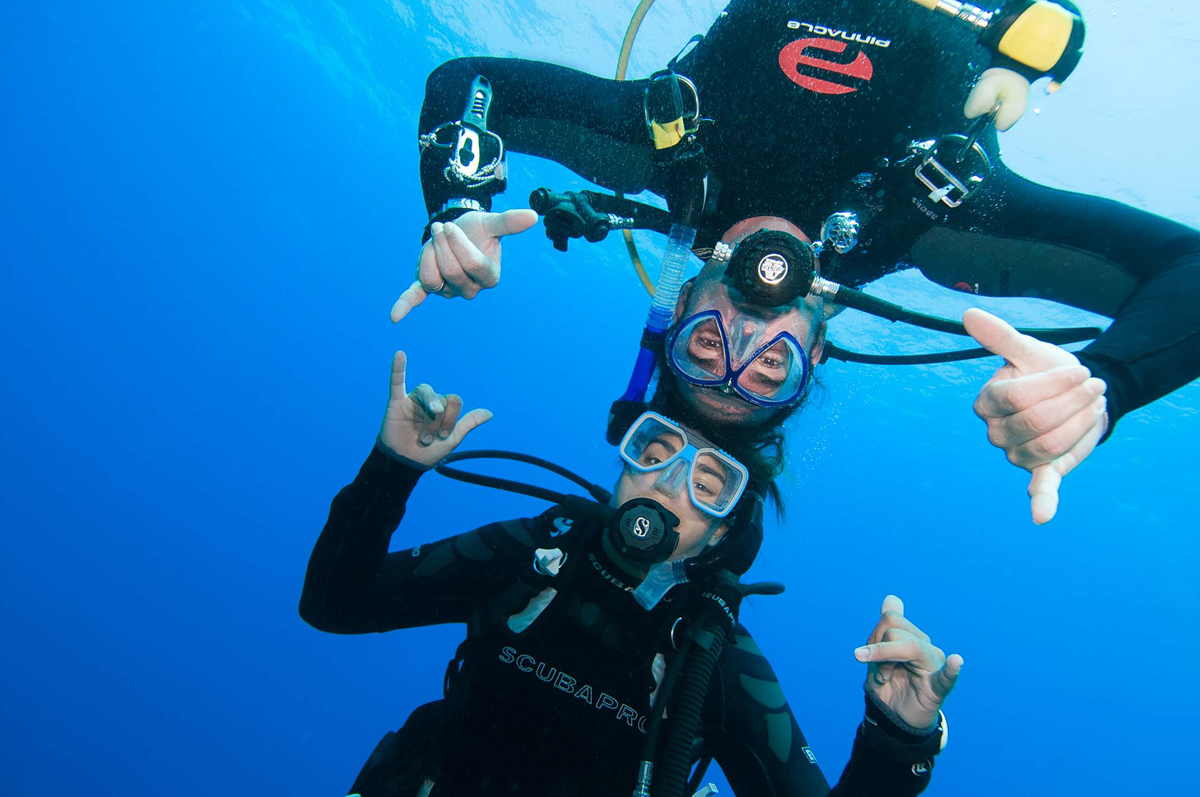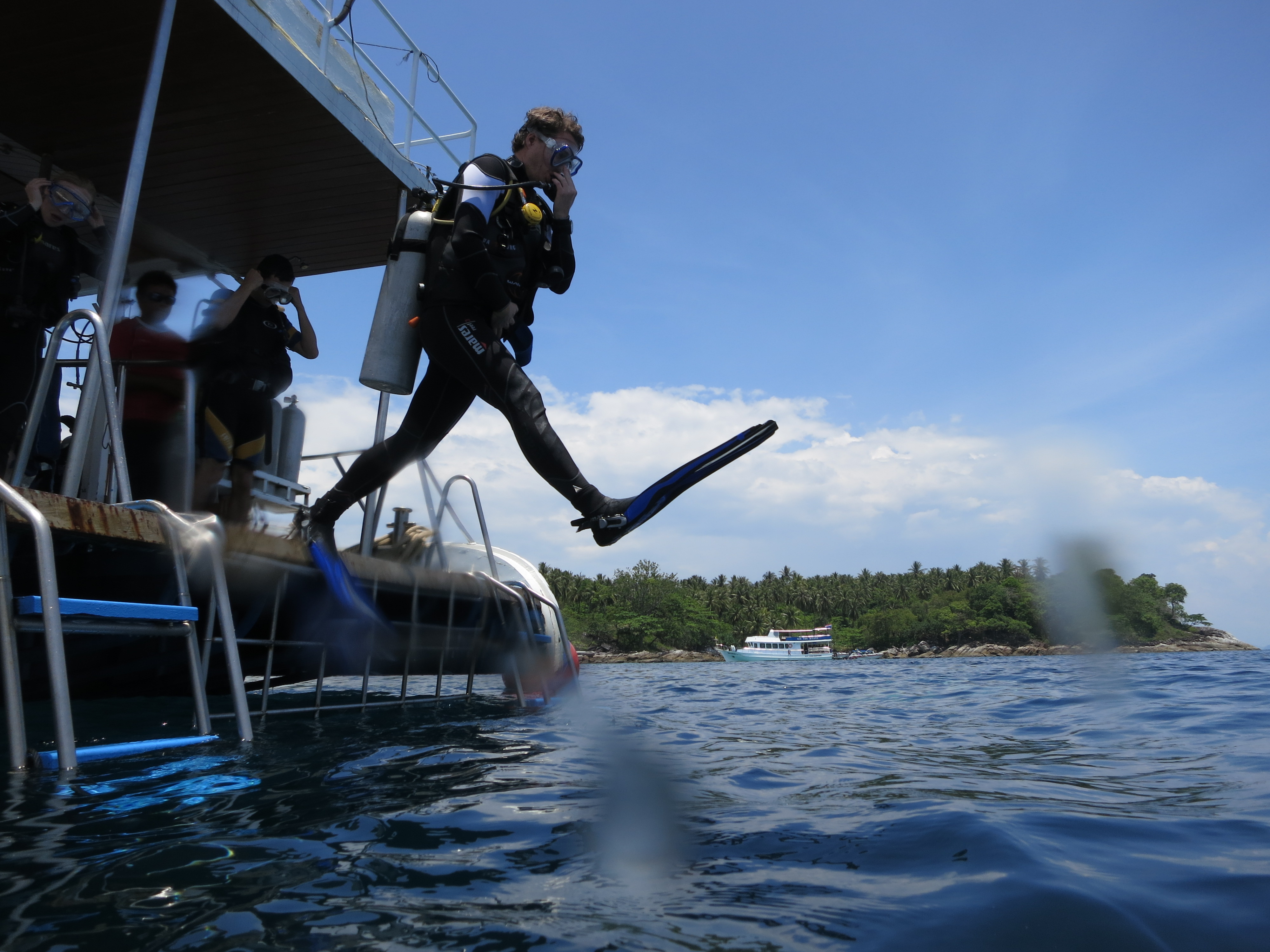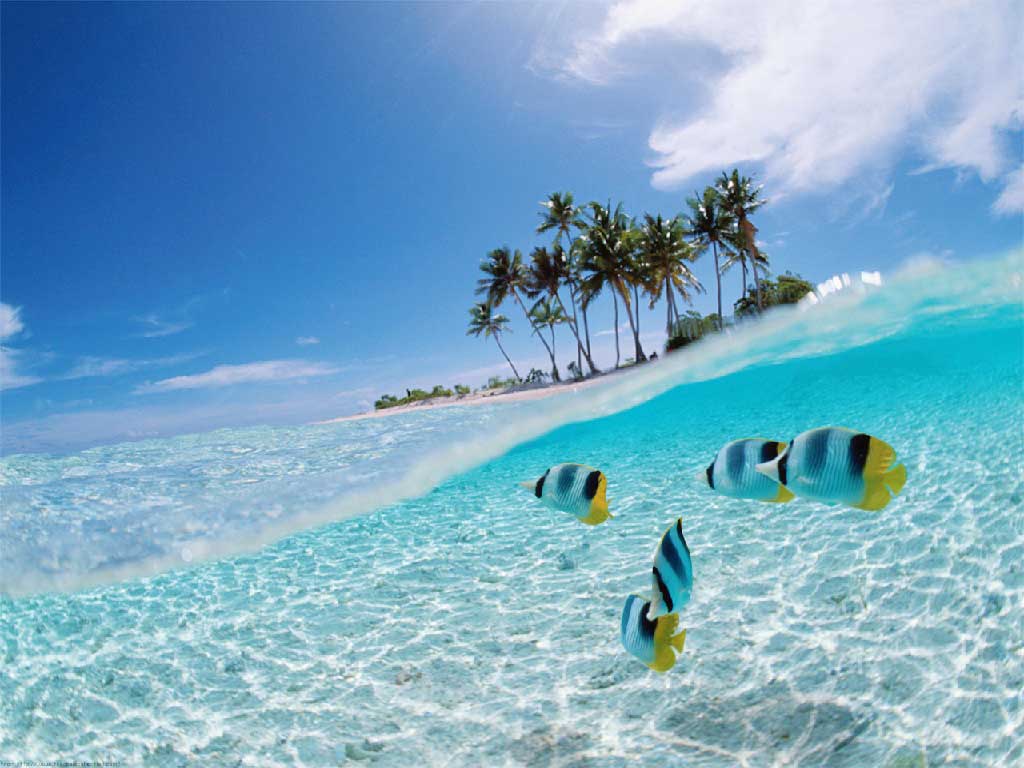I love unusual rocks and will travel around the world to see famous ones. I’ve visited Ayer’s Rock in Australia and the spires of stone in Greece’s Meteora area. Perhaps one day I’ll even see El Capitan in Yosemite Park. I’m also quite fond of diving, so it’s no wonder that my favourite dives in Komodo National Park are an underwater rock and a nearby rocky point.
Return to Komodo
It had been several years since I had dived the Komodo area. The opportunity to do a checkout trip with liveaboard SMY Ondina in preparation for a charter in Raya Ampat arrived rather suddenly. Within twelve days my dive buddy and I had made out travel arrangements, flown to Bali, connected to Bima and were sailing into the prolific waters of Komodo, Rinca and the Komodo National Park.
Lucky that we keep our gear packed for such occasions! Two of my favourite dive sites in the area are Cannibal Rock and Torpedo Point. Both sites are hidden in a deep bay on the southern end of Rinca Island and are further sheltered by Nusa Kode, which sits in the middle of the bay. As with many great sites, strong currents often prevail. Fortunately, these sites are somewhat protected, so it only takes a bit of effort to coordinate dives for slack tide.
Cannibal Rock
Cannibal Rock just breaks the surface at low tide. Its barren appearance is deceiving, as below the water is some of the most concentrated marine life in the world. The nutrient-rich upwellings produced by the meeting of the cool Indian Ocean and the warm Flores Sea bring in food for scores of invertebrates and fish. The rock is blanketed with corals, gorgonians, black corals and crinoids in an endless variety of colour. The sheer density of life is mind-boggling.
Red, purple and yellow sea apples, a type of rare sea cucumber, are quite common here. For me, they are reason enough to make the trip. At night and when the current are running, these fascinating creatures extend their bright yellow and white tentacles to filter plankton from the water. We found plenty of other interesting animals – lionfish, angelfish, fire urchins (sometimes with Coleman shrimp!), lobsters and decorator crabs among the cracks and crevices of Cannibal Rock. At one large coral, we looked on as surgeonfish stopped for a spa treatment at the cleaner wrasse station.
When there was current, fish were more active. I watched as a golden trumpetfish tensed, then released like a golden arrow set loose from an aquatic archer’s bow into a closely packed target of silversides. Small schools of snapper, surgeonfish and other species swarmed around Cannibal Rock, making every dive frenetic and enthralling.
Torpedo Point
As photographers, my buddy Tony and I were quite happy to dive Torpedo Point and look for macro life as often as possible. Other passengers more keen on big fish, sharks and rays went to a different site on the southern end of the bay. The first subject to catch our attention here was an upside-down jellyfish that scooted across the sand atop a decorator crab that had adopted the jellyfish as camouflage. When I tried to take a photo, the crab buried itself in the sand, leaving only its eyes and the jellyfish exposed.
Moments after leaving the crab we encountered a 25-centinmetre long Armina nudibranch, which feeds on sea pens. As soon as I photographed one creature, we’d find another, and another and then another. We spent one shallow dive playing hopscotch across the rocks finding various species of colourful nudibranchs, pretty urchins and loads of juvenile fish. At night creatures such as squid, octopus, cat sharks, lobsters, crabs and Spanish dancers ruled the area. Patches of seemingly barren sand in the day became dotted with beautifully coloured sea pens rising out of the sea floor. Tiny crabs, shrimp or gobies lived on most of the sea pens, as well as on soft and wire corals deeper down. Torpedo rays, which stun their prey with an electrical charge, were prevalent in the sandy shallows.
With our night-time vision confined to the beam of or dive torch, we discovered three frogfish, one yellow, one grey and one a brilliant red-orange all nestled among the rocks, and all of which we probably overlooked on previous dives. We explored the area for two days, then sailed off in search of other interesting adventures and discoveries among the rocks of Komodo.
An apple a day
The strikingly coloured red and purple sea apple is a sea cucumber belonging to the genus Pseudocolochirus. This filter feeder uses rows of tube feet to attach itself to rocks or corals in an area of high current, then exposes its feeding tentacles to the passing water in order to collect and consume tiny plankton particles. Sea apple tentacles are covered with mucus. Once a tentacle accumulates food, it’s brought to the sea apple’s mouth, sucked clean and recoated with mucus.
Sea apples can inflate or deflate their bodies to ride the current or undulate their bodies and “run” away. When seriously disturbed, they will eject extremely sticky threads, called “Cuvierian Tabules” from their rear ends, which then stick all over a potential predator. One thing most divers don’t know is that sea cucumbers breathe through their butts. Most people assume the front end of the sea cucumbers do the breathing, but it’s actually the anus which opens and closes as the animal inhales and exhales!
Pinsi dive ships
Several liveaboards offering Komodo itineraries use traditional “Pinisi” style ships. These wooden ships are made by hand, following time-honoured methods used by the tribes of South Sulawesi for many generations. SMY Ondina, our floating home in Komodo, was built in South Sulawesi on the famous shipbuilding peninsula of Bira. Construction of the hull took one-and-a-half years, all by wooden mallet and chisel. Shipbuilders first assembled the hull, held together by wooden dowel pins, then slowly pulled it into the sea. The standing rigging was then erected using a carefully selected three for the mast. Delicate sanding and polishing by hand was required before the ship sailed to Makassar, where modern conveniences were added.
Factfile
Getting there: There are many liveaboards plying the waters of Komodo and Rinca. Trips usually originate in Bima or Bali. There are also land-based dive operators in Labuanbajo which are less expensive but require long boat rides to reach most of the dive sites. Many major airlines fly into Bali from Singapore, Hong Kong and other Asian hubs. From Bali there are daily flights to Bima (Sumbawa) or Labuanbajo (Flores).
Dive season and climate: Tropical climate, with diving possible year round. The preferred season falls between May and November. Although the water temperature is generally warm, it can become chilly. A 3mm to 5mm exposure suit should suffice.
Documents and taxes: For most countries, visas are issued on arrival at Denpasar airport. The fee is currently US$25. There is also a departure tax, payable only in local currency and currently costs Rupiah 100,000 for international departures and Rupiah 20,000 for domestic.
Communication: Most, if not all liveaboards have satellite phones for guest use, as well as USB and VHF radio communications. Mobile phone coverage generally not available once ships leave port.
Electricity: 220-240V, 50Hz. Some liveaboards may supply 110V.
Currency: Indonesian Rupiah. US$ also accepted in some situations.
Tipping: Variable on liveaboards. General range of about 10% of the trip price is recommended, but check with the boat operator.
Health and safety: Malaria is endemic in many parts of Indonesia. Although mosquitoes are not common on liveaboards, a prophylaxis is recommended for land visits.
Time zone: GMT + 8 hours.

